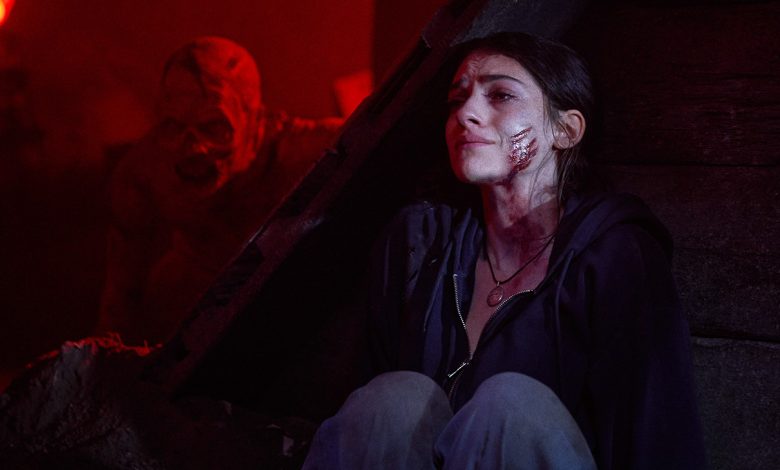Why the Original Writers Aren’t Credited on the Movie

When the credits roll on Until Dawn this weekend, hundreds of people who contributed to Hollywood’s latest video game movie will be acknowledged for their work, from director David F. Sandberg all the way down to the assistants and the caterer. But two notable names will not be among them: Larry Fessenden and Graham Reznick, the duo who wrote the 2015 hit video game that launched the franchise.
While comic book writers and artists often complain about skimpy payments or lack of ample credit for the work that inspires movies, they generally are given a special thanks in the credits of those films. But as sources who spoke with The Hollywood Reporter note, that’s generally not true in the world of video game adaptations, where the company behind a game — not the game’s creators — are credited.
اRelated Posts:
It’s something video game writers are now thinking about more and more, particularly as hits like A Minecraft Movie prove the genre is one of the more dependable box office draws today.
In a recent phone interview, Fessenden and Reznick say that they aren’t surprised that the new movie doesn’t acknowledge them as key figures on the first game, which was created by the gaming studio Supermassive. “I didn’t assume anything, but I thought somebody would have bothered to throw in our names, even during the end credits,” Fessenden says. “But there’s no courtesy in show biz.”
The first Until Dawn game landed Fessenden and Reznick a Guinness World Record for the “Longest Script for a Graphic Adventure Video Game” in 2015, with Reznick noting they generated 10,000 pages over the development of the game, which centers on eight characters forced to survive a night on Blackwood Mountain. The player is steered through a slasher movie-inspired, Choose Your Own Adventure-like story, which breaks off into increasingly varied directions based on the player’s choices. The duo penned so many pages due to the complexity of the narrative, as well as a shift from a potential PlayStation 3 game (which was never released) to PlayStation 4.
The duo stress they did not create the game; Fessenden was invited to pitch his take by Until Dawn creative director Will Byles and Supermassive’s then co-owner Pete Samuels. But it’s undeniable that are key fixtures of the series, working on future iterations of the game, including the virtual reality-enabled spinoff Until Dawn: Rush of Blood (2016), which features Fessenden as both the face and the voice of the game’s antagonist, a shape-shifting carnival barker who guides the player through that game. Fessenden also portrays a legendary hunter who appears throughout the first Until Dawn.
The writers had their own brush with an Until Dawn movie in 2015, when Sony approached them to pitch their take. Their concept was a meta-narrative that Reznick has compared to cult horror gems Brainscan (1994) and Wes Craven’s New Nightmare (also 1994). Ultimately, their itch was just one of multiple Sony heard over the past decade, and it did not come to fruition. Fessenden and Reznick were not approached to consult on the new movie, written by Blair Butler and Gary Dauberman, which uses new characters and a new location from the original game.
They’re not seeking credit from Sony, Supermassive, or the Writers Guild of America. But an acknowledgement in the credits would have been nice.
“This is one of those situations where credit is clear, but because the Guild doesn’t know who to ascribe credit [for video games] in general, they don’t have a hard and fast rule about how to do that,” says screenwriter and WGA member C. Robert Cargill, whose credits include The Black Phone (2021) and Doctor Strange (2016). Cargill was also responsible for co-writing several unproduced video game adaptations with director and regular collaborator Scott Derrickson (The Gorge, Sinister), including a Resident Evil series for Netflix and a Deus Ex: Being Human movie.
“Technically, the studio’s abiding by Guild rules,” adds Cargill. “But the Guild has no say or control or deals with the video game industry.”
Neither Fessenden nor Reznick are members of the WGA, but Reznick participated in the guild’s Video Game Writers Caucus, one of several caucuses organized by WGA West, which the guild said were intended for “organizing in work areas not traditionally covered by the guild” and that would allow non-union members to build relationships with guild members. The Video Game Writers Caucus was disbanded at the end of 2021, and the guild’s annual award for Video Game Writing was discontinued in 2019 after ten years.
One issue that Reznick brought up during the caucus’ meetings: what exactly constitutes “interactive media?”
“Interactive media is not covered by the guild,” Reznick says, “because there’s no legal definition of what’s ‘interactive.’” He also points to how difficult it was for video game writers to get gaming companies to sign off on a guild-approved Interactive Program Contract (IPC), a one-off contract that would give non-guild members approved pension and health benefits for their work on specific projects, as well as the opportunity to join the WGA. Reznick wanted to submit an IPC to Supermassive, but was told to wait until WGA West could draft an updated IPC. That never happened.
The WGA West did not respond to a request for comment from THR.
Reznick and some former Video Game Writers Caucus members continue to hold informal group meetings. Rob Forman, a member of the WGA West Board of Directors and a writer on video games such as Spider-Man 2, is among the members still talking about unionizing video game writers.
“In TV and film, the ‘written by’ credit is a very specific term that is part of our union contract with the studios. Unfortunately, in video games, that kind of guarantee and protection doesn’t currently exist, so credit can be more arbitrarily determined by individual game companies,” Forman writes in an email to THR.
Without a union-enforced industry standard, video game companies aren’t required to give credit to writers like Fessenden and Reznick. Some projects, such as Neil Druckmann’s The Last of Us and Scott Cawthon’s Five Nights at Freddy‘s sees the games creators intimately involved in the the adaptations — and credited accordingly. (In those cases, Druckmann and Cawthon developed the games, and were not work for hire writers brought in by a studio to execute a vision, as Fessenden and Reznick were.)
Looking back on the first game, Reznick says that he and Fessenden were responsible for the characters’ dialogue and individual sub-plots more than the game’s overarching story, because when Until Dawn’s development shifted to the more powerful PlayStation 4 system, more of the story could be told without dialogue.
“A lot of our dialogue disappeared when they realized they could capture the actors’ performances and convey more of their characters by acting,” Fessenden says. “But we had already done all that backstory work on the characters, which gives you a better sense of who these characters are. That’s what gave the [first Until Dawn] game a certain life, and also why it’s so replayable.”
The duo do not have sore feelings about the Until Dawn movie. He and Reznick joke that they are more upset to have not been asked to reprise their roles from the first Until Dawn (Reznick doesn’t have an onscreen character in that game, but he provides the voice of a radio DJ).
Still, they worry things are moving so fast that other writers may be left behind.
Says Reznick: “I truly think that the guilds are not keeping up with how fast the industry is moving away from traditional media formats. I don’t know what that’s going to do for the future of the industry.”
Source: Hollywoodreporter
HiCelebNews online magazine publishes interesting content every day in the movies section of the entertainment category. Follow us to read the latest news.
Related Posts
- ‘You’ Season 5 Finale and Joe’s Brutal Ending Explained: Interview
- Ciara Reveals When She Wants to Start Trying for Baby No. 5 with Husband Russell Wilson (Exclusive)
- Hamdan Ballal Pens Candid Op-Ed About West Bank Assault: “Our Movie Won an Oscar, But Our Lives Are No Better Than Before”
- Tina Fey Embraced “the Sandler Model” for New Show ‘The Four Seasons’: “Actors in Nice Locations, Wearing Flat Shoes”
- Morgan Wallen’s Ex KT Smith Reveals She’s Back Together with Husband Luke Scornavacco After Announcing Split





